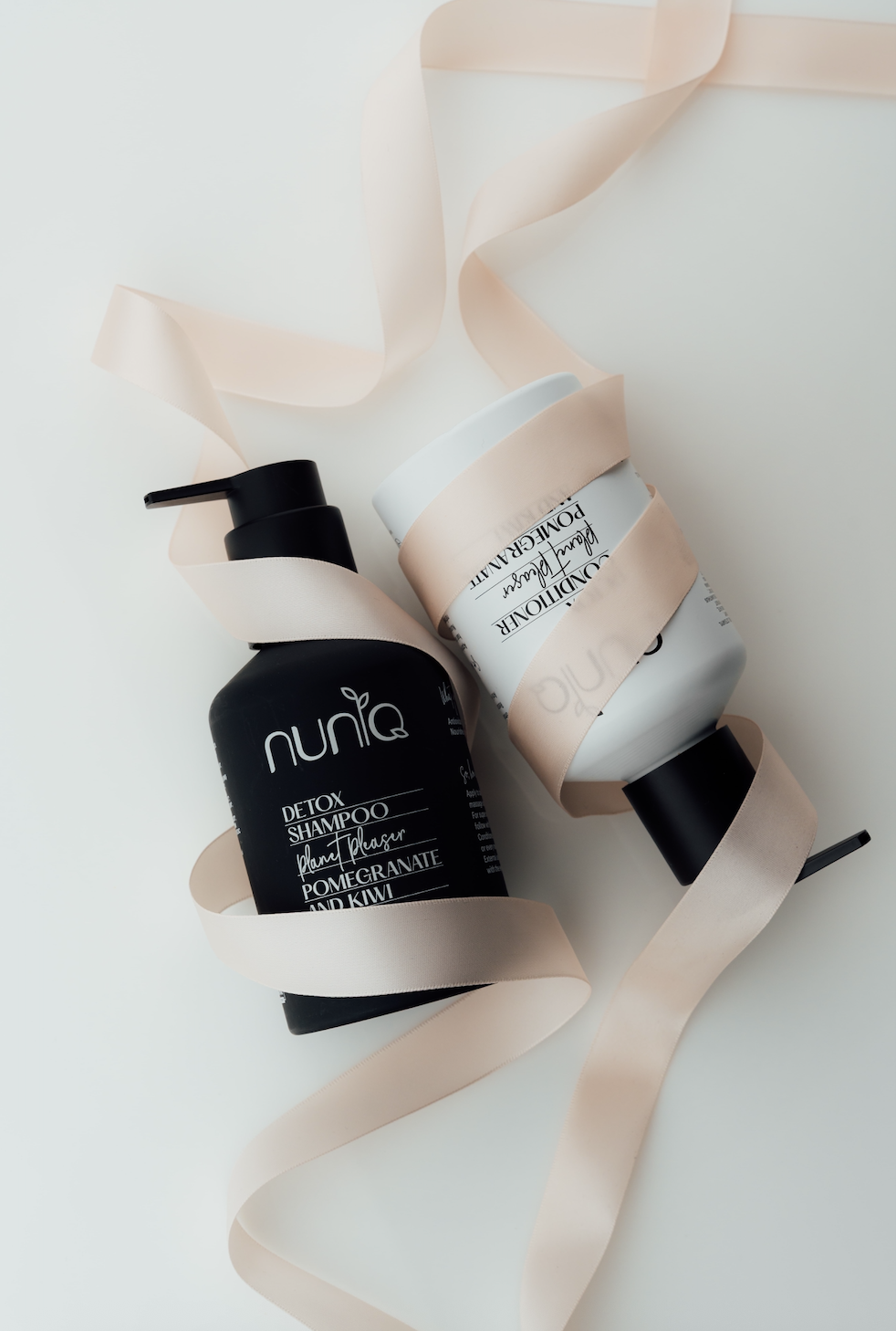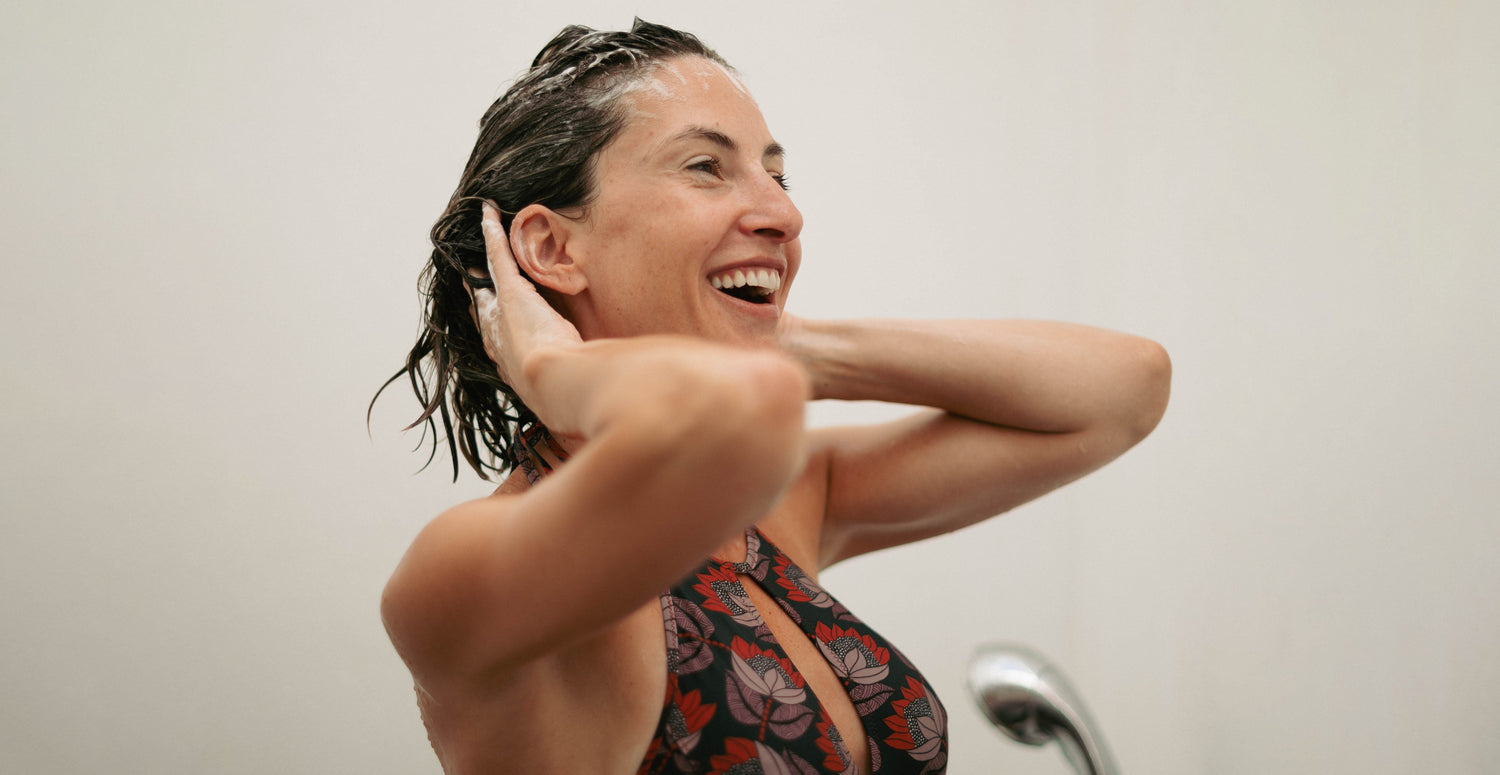How much hair loss is normal?
One of the most common questions we get is: how much hair loss is too much?
It’s completely normal to shed between 40 and 100 hairs a day. If you notice a lot more than that—on your pillow, in the shower, or after brushing—it may be time to check in with a dermatologist.
Hair loss is not just a cosmetic issue. It can be a signal of your overall health, not just your hair health.
A topic everyone cares about—sooner or later
Since starting Nuniq, we’ve had countless conversations about hair. And one thing is clear: everyone, at some point, worries about hair loss.
When you’re in your 20s or early 30s, it’s easy to take your hair for granted. But after breastfeeding, many women suddenly experience a very real shedding phase. Our male friends, on the other hand, are often the ones who take prevention seriously from an earlier age. And later in life, menopause becomes another critical turning point.
Hair loss is deeply personal, and yet it’s something almost everyone will face in one form or another.
Types of hair loss
Doctors usually divide hair loss into two broad categories:
-
Scarring hair loss – Less common. This happens when the immune system triggers chronic inflammation that damages the follicle permanently, leading to irreversible loss if not treated quickly.
-
Non-scarring hair loss – Much more common. The main form here is androgenetic alopecia (sometimes called “male or female pattern hair loss”).
What is androgenetic alopecia?
Androgenetic alopecia is essentially an inherited sensitivity to your own hormones. It affects about 50% of men and around 25% of women before age 50. After menopause, the number of women affected rises significantly.
What happens is a process called miniaturization of the hair follicle. Imagine the follicle—the tiny home where hair grows—as a house. With time, the house walls start crumbling, and the space gets smaller. The follicle shrinks, and the hair it produces becomes thinner, weaker, and eventually may stop growing.
The role of 5-alpha reductase
Here’s where hormones come in. Your body produces an enzyme called 5-alpha reductase. This enzyme converts testosterone into dihydrotestosterone (DHT)—a more potent form of the hormone.
If your follicles are genetically sensitive to DHT, it binds to receptors in the follicle and triggers miniaturization. Over time, this leads to progressive thinning and pattern hair loss.
Why prevention is key
Science shows we’re much better at slowing down further loss than at regrowing hair that’s already been lost. Once follicles are gone, bringing them back is extremely difficult.
That’s why focusing on scalp health and early prevention is crucial. The healthier the scalp environment, the better your hair can flourish.
Our Planet Pleaser Shampoo is already a very good first step for keeping the scalp balanced and strong. But we also knew we wanted to go further.
The story behind Head Turner
After years of hearing people’s concerns—women after pregnancy, men watching their hairlines, and countless conversations about the changes that come with age—we realized that prevention needed something stronger, but also cleaner.
That’s why we decided to take our time to reformulate our hair loss booster and bring out something truly worth it. A product that really works, that’s clinically tested, and that doesn’t come with the harsh side effects many traditional hair loss treatments do.
The result? Head Turner.
How Head Turner works
Two of its star ingredients address androgenetic alopecia directly:
-
Capixyl™ – A powerful blend of a biomimetic peptide and red clover extract. It acts as a 5-alpha reductase inhibitor, meaning it helps reduce the conversion of testosterone into DHT, the very hormone that drives follicle miniaturization in androgenetic alopecia. In clinical studies, Capixyl™ has been shown to reduce hair loss, improve density, and support overall scalp health. Read more in this study
-
Pea Peptide – Rich in essential amino acids, this plant-based peptide helps to strengthen and thicken the hair shaft. It also supports the scalp’s natural balance, creating a healthier environment for growth.
Together, they help protect the follicles, minimize the impact of DHT, and support stronger, fuller-looking hair over time.
The bigger picture
Androgenetic alopecia may be the most common type of hair loss, but it’s not the only one. If you’d like a deeper dive into the many causes of shedding—from stress to nutrition to postpartum changes—check out our previous article: Hair Falling Out? Causes and What You Can Do to Stop It
The key takeaway? Scalp health = hair health. Paying attention to what’s happening at the root can help you prevent future loss and keep your hair thriving for longer.






